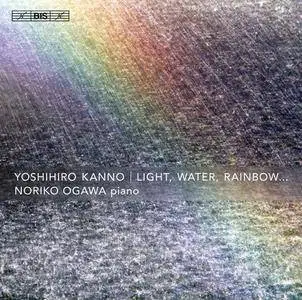Noriko Ogawa - Yoshihiro Kanno: Light, Water, Rainbow… (2015)
EAC | FLAC | Image (Cue&Log) ~ 249 Mb | Mp3 (CBR320) ~ 175 Mb | Artwork included
Classical, Contemporary | Label: BIS | # BIS-SACD-2075 | Time: 01:12:09
EAC | FLAC | Image (Cue&Log) ~ 249 Mb | Mp3 (CBR320) ~ 175 Mb | Artwork included
Classical, Contemporary | Label: BIS | # BIS-SACD-2075 | Time: 01:12:09
Born in 1953, Yoshihiro Kanno studied at the Tokyo University of Fine Arts and Music and is currently a professor at Waseda University's Department of Intermedia Arts and Science. In his compositions he bases himself on three idioms: Western instrumental music, Japanese traditional instruments, and computer music. Combining these various elements freely, he creates scores for Japanese instruments and computer as well as for Western and Japanese instruments, such as the recent work Himiko – Memories of the Sun Goddess which fuses Western classical music and Japanese traditional music with Kabuki and Japanese classical dance. The pianist Noriko Ogawa, acclaimed for a wide-ranging discography comprising music by composers from Mozart and Debussy to Takemitsu and Graham Fitkin, is a champion of Kanno's music and has commissioned three of the works on the present disc, the so-called 'Particle of Piano' series. In each work, the pianist is required also to create sounds on a Japanese instrument, respectively a small iron wind chime, a pair of metal chopsticks made of the same steel as the fabled samurai swords, and a set of metal bells used in Kabuki performances. All three of these possess particular acoustical traits which affect how their sounds interact with that of the piano.


